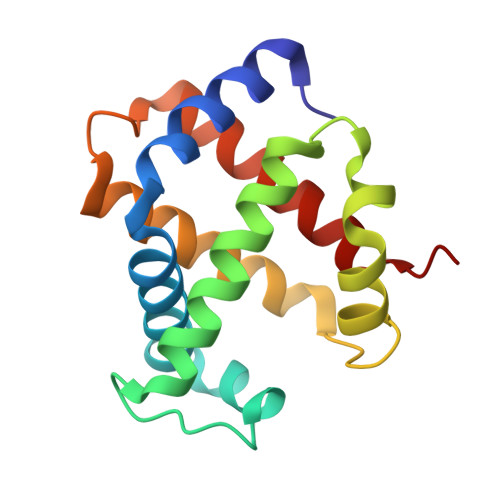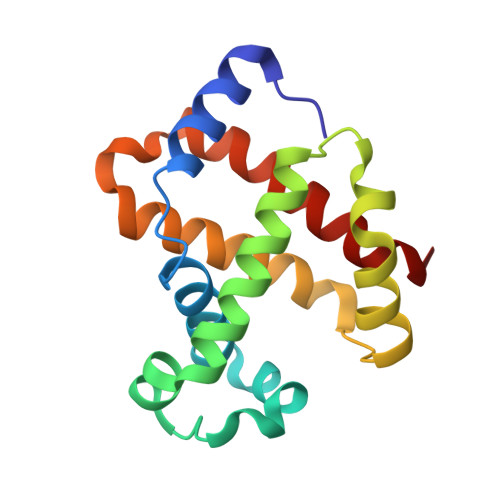Design, Synthesis, and Biological Evaluation of Ester and Ether Derivatives of Antisickling Agent 5-HMF for the Treatment of Sickle Cell Disease.
Xu, G.G., Pagare, P.P., Ghatge, M.S., Safo, R.P., Gazi, A., Chen, Q., David, T., Alabbas, A.B., Musayev, F.N., Venitz, J., Zhang, Y., Safo, M.K., Abdulmalik, O.(2017) Mol Pharm 14: 3499-3511
- PubMed: 28858508
- DOI: https://doi.org/10.1021/acs.molpharmaceut.7b00553
- Primary Citation of Related Structures:
5URC - PubMed Abstract:
Candidate drugs to counter intracellular polymerization of deoxygenated sickle hemoglobin (Hb S) continue to represent a promising approach to mitigating the primary cause of the pathophysiology associated with sickle cell disease (SCD). One such compound is the naturally occurring antisickling agent, 5-hydroxymethyl-2-furfural (5-HMF), which has been studied in the clinic for the treatment of SCD. As part of our efforts to develop novel efficacious drugs with improved pharmacologic properties, we structurally modified 5-HMF into 12 ether and ester derivatives. The choice of 5-HMF as a pharmacophore was influenced by a combination of its demonstrated attractive hemoglobin modifying and antisickling properties, well-known safety profiles, and its reported nontoxic major metabolites. The derivatives were investigated for their time- and/or dose-dependent effects on important antisickling parameters, such as modification of hemoglobin, corresponding changes in oxygen affinity, and inhibition of red blood cell sickling. The novel test compounds bound and modified Hb and concomitantly increased the protein affinity for oxygen. Five of the derivatives exhibited 1.5- to 4.0-fold higher antisickling effects than 5-HMF. The binding mode of the compounds with Hb was confirmed by X-ray crystallography and, in part, helps explain their observed biochemical properties. Our findings, in addition to the potential therapeutic application, provide valuable insights and potential guidance for further modifications of these (and similar) compounds to enhance their pharmacologic properties.
- Department of Biology, School of Arts & Sciences, University of Richmond , Richmond, Virginia 23173, United States.
Organizational Affiliation:





















